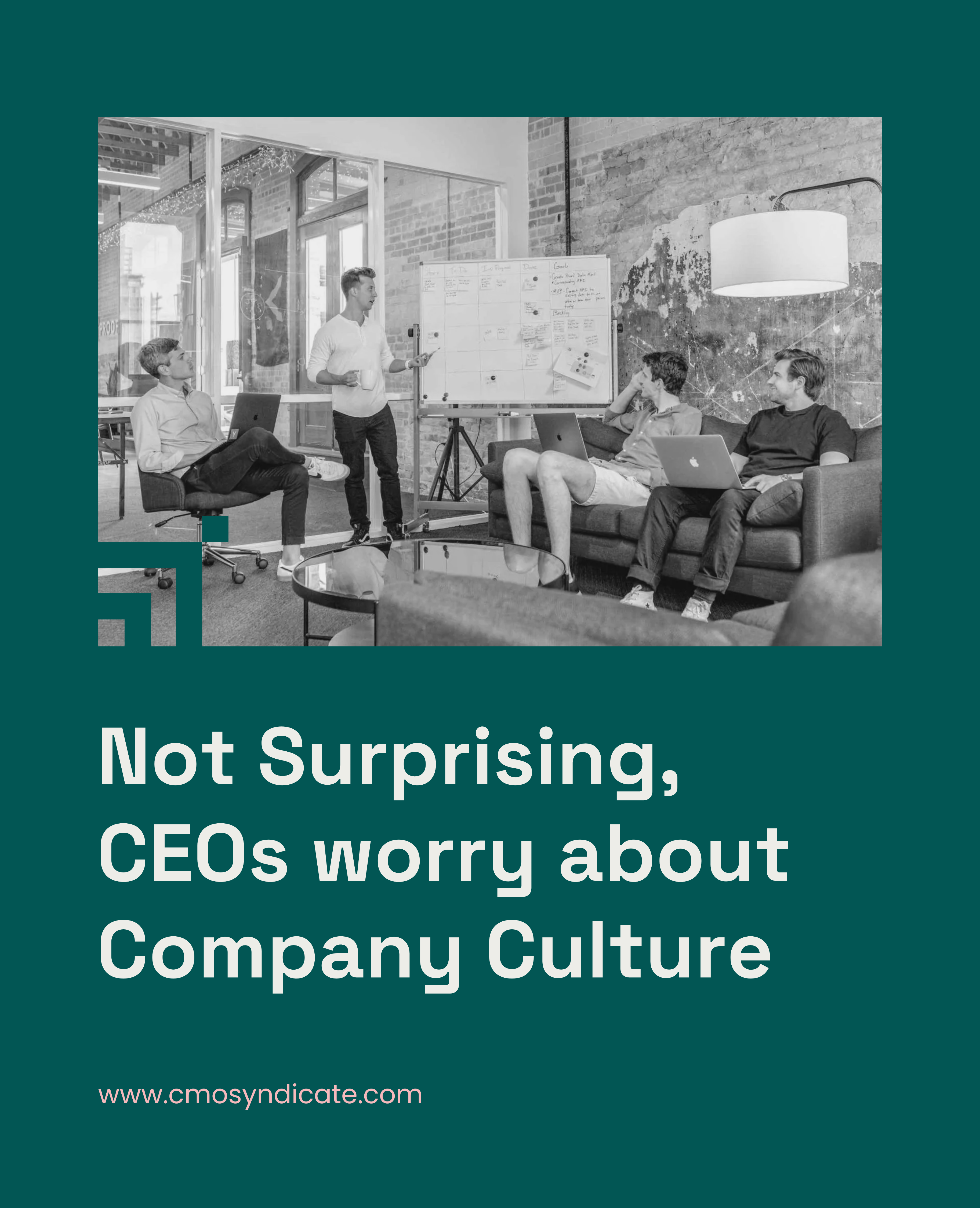Not Surprising, CEOs worry about Company Culture
In Spencer Stuart’s Measure of Leadership series, over 2,000 CEOs and directors were surveyed about the challenges that keep them up at night, alongside the perspectives of more than 1,200 employees in the U.S. and U.K. Unsurprisingly, Company Culture emerged as the number one concern for leaders.
As CMOs, we see culture as a pain point that we work on in several ways; whether you call it culture, DNA, Brand, or Mission, Vision, Values, we’re working in the same area, pulling on the same growth levers. Our role extends encompasses understanding whether the organizational “why” has been clearly defined and communicated, whether employees have articulated their personal “why,” and crucially, whether these align.
The reality? They often do not, which is why Company Culture is top of mind for so many executives. It’s challenging to expect employees to commit to a mission they don’t fully understand, especially in times of change when the very essence of an organization’s purpose may be shifting, often without clear communication to the team.
It’s worth reflecting on the root of the word “communication,” derived from the Latin “communicado,” meaning ‘to make common.’ This goes beyond simply telling; it’s about ensuring the message sent is the message received. (A reminder I owe to my colleague Mariam Haddad, who often underscores this point.)
When we think of Culture and how it impacts the bottom line, consider that as Humans, we all need to buy-into something and as leaders of companies we need to give those Humans something other than the P&L to buy in to. See how that works? Humans do great work when they are doing what they are good at but also what they are passionate about.
If concerns about your company culture resonate with you, don’t hesitate to reach out. The role of a CMO goes far beyond the “arts and crafts” perception. We are strategic partners, working with the growth levers that, when aligned with business strategy, can drive meaningful transformation using Brand, DNA, Culture, Values, and Internal Communication.


Leave A Reply